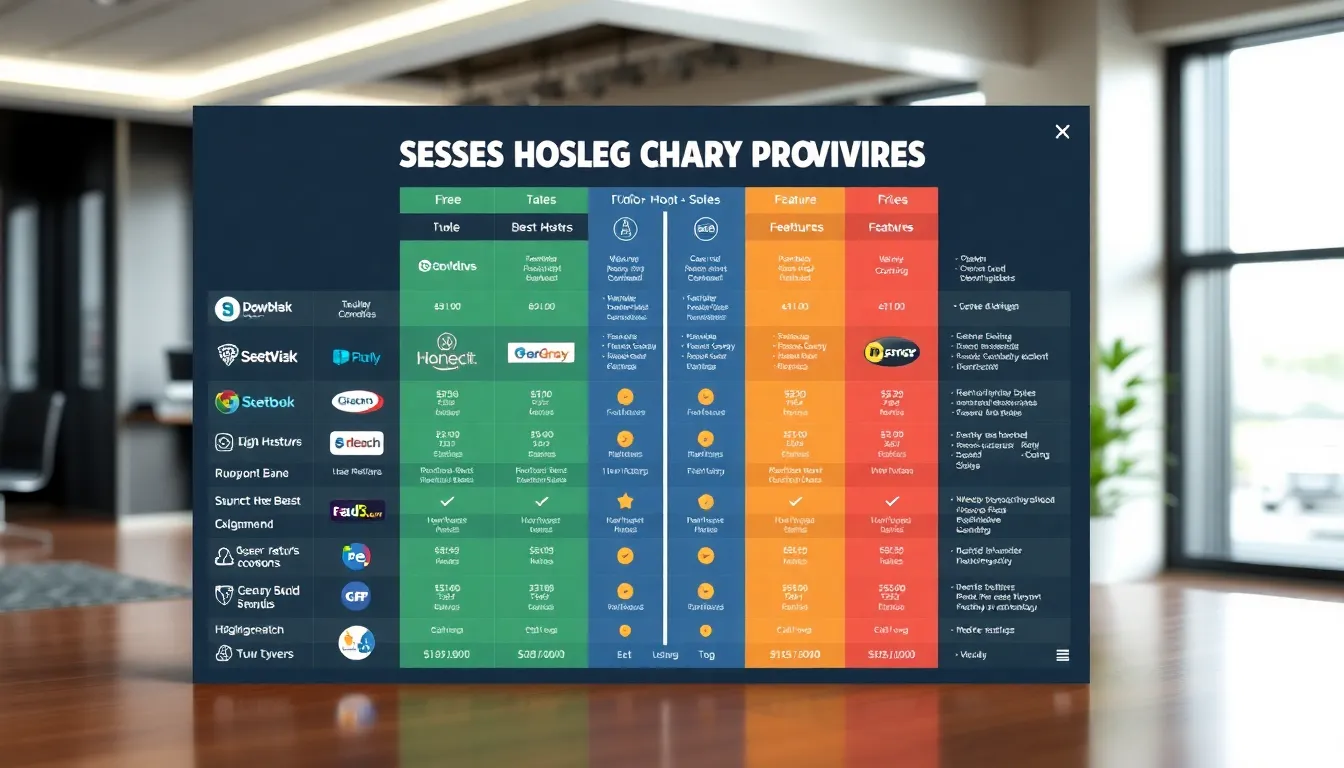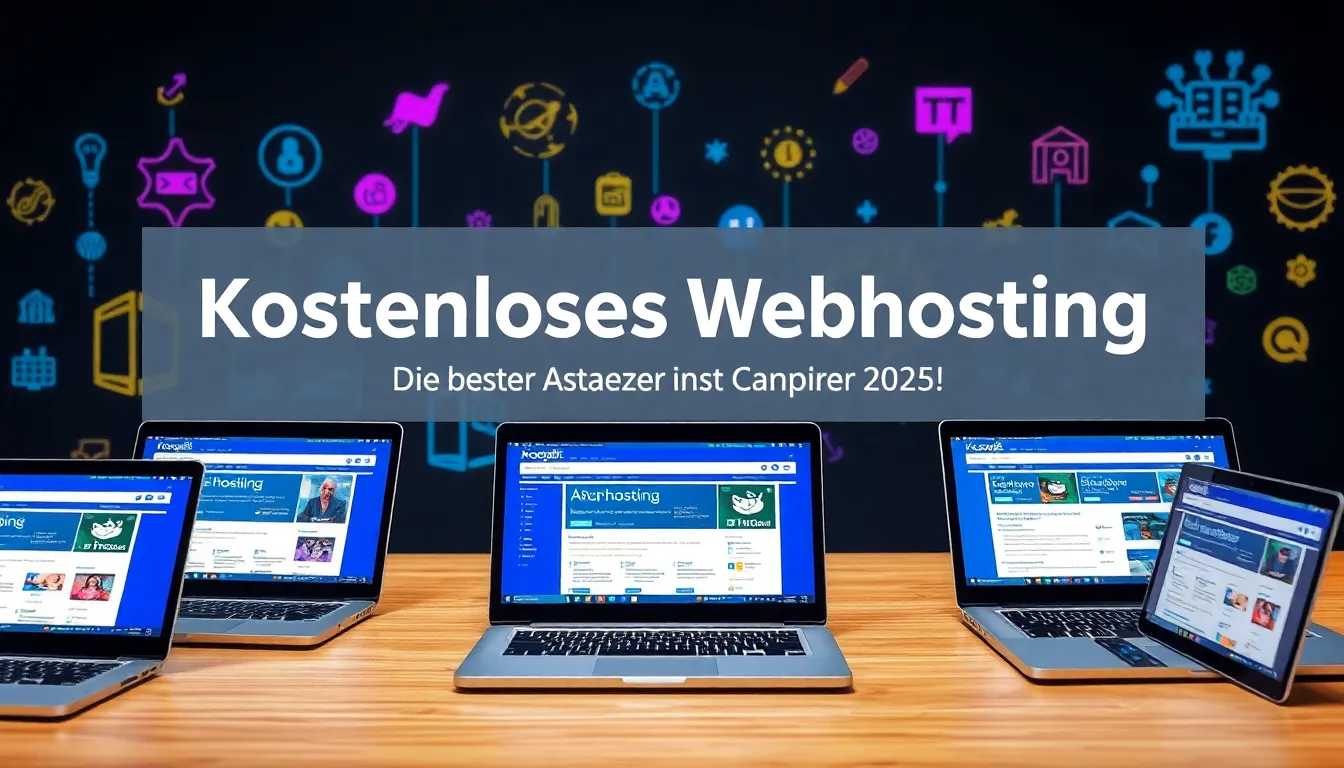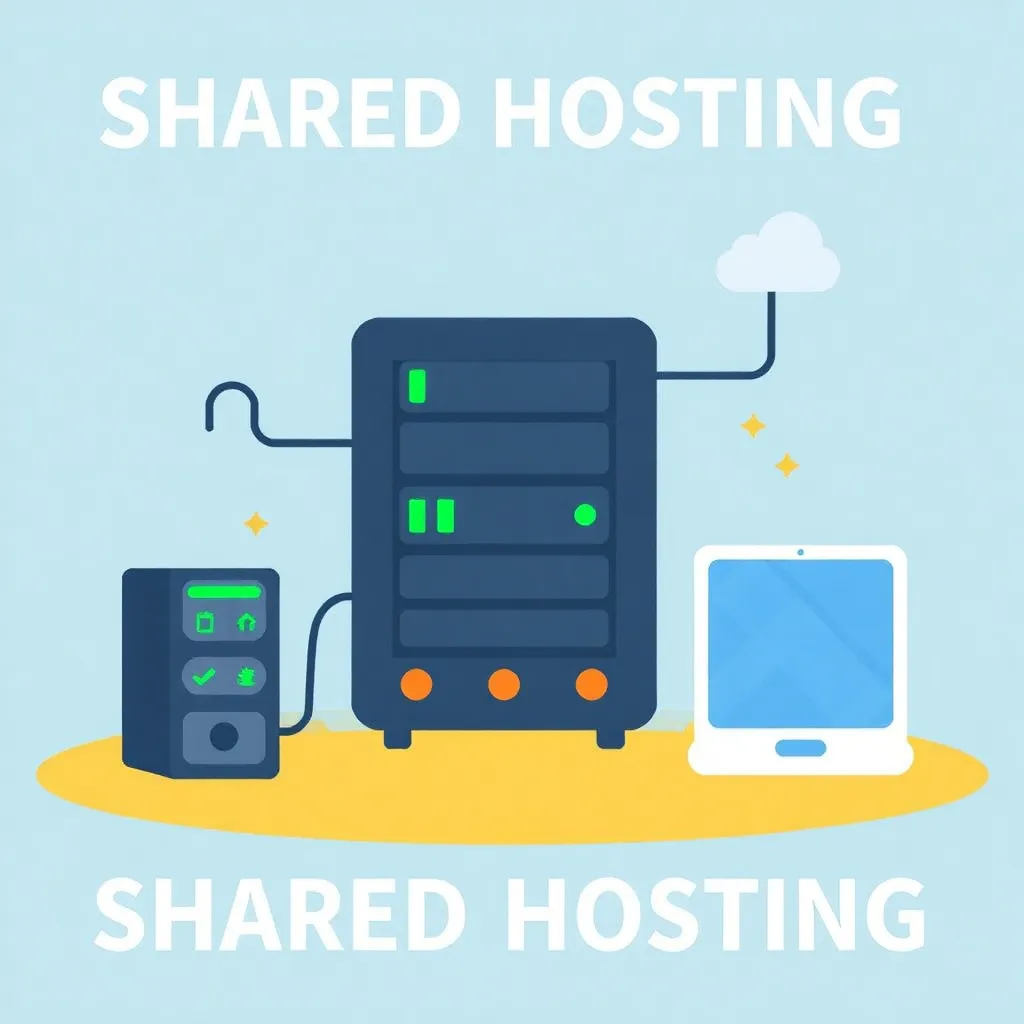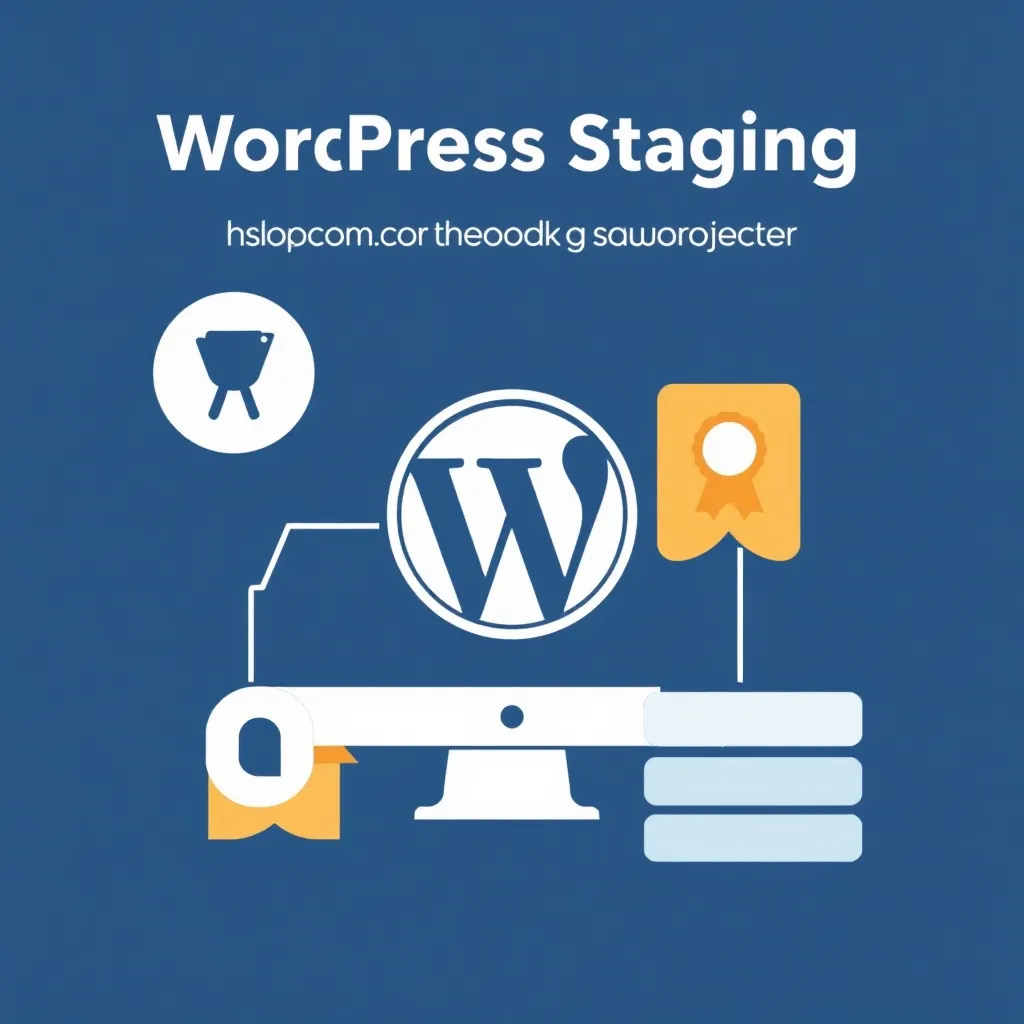Free website hosting sounds attractive - but only a few providers manage to combine favorable conditions with stability, data protection and user-friendliness. In my practical comparison, I show which solutions for free web hosting in the year 2025.
Key points
- Memory and Bandwidth - decisive for range of functions
- Availability - Stable loading times without failures are a must
- Security - free SSL certificates as standard
- Freedom from advertising - Influences professionalism and user experience
- User interface - Intuitive control saves time

What does free hosting really offer today?
Many offers appear identical at first glance - but on closer inspection, storage space, loading times and additional functions differ greatly. The quality of free services in particular often depends on the support and server infrastructure.
In my recommendations, I pay close attention to whether essential technical functions such as SSDs, SSL certificates or Database support are included free of charge. Server availability is also crucial - some providers are constantly at over 99.8 %, while others regularly go down.
Another criterion is whether the provider includes advertising on your website. This can be particularly important for business websites. Impact of your content impair.
Additional functions that are often overlooked
When choosing a free hoster, the focus often remains on storage and bandwidth. But a few other features can make the difference between a smooth project and a tedious tinkering:
- E-mail inboxes: Not all free hosters offer their own e-mail address. Some only allow forwarding or require complicated mail forwarding. If you want a professional presence, you should check whether your own mailboxes are included.
- Subdomains: Many free providers only provide subdomains of their own service, such as projectname.provider.com. This is sufficient for private purposes, but does not exude much professionalism. Some services allow the integration of an externally purchased domain - this is an important plus point.
- Cronjobs & scripts: If you want to control dynamic functions, such as automated e-mail actions or database maintenance, using cronjobs, you need the appropriate access. Free providers often restrict such tools or do not offer them at all.
- Restricted databases: Sometimes only one database is allowed per account. This is sufficient for a small blog, but for larger projects you quickly reach your technical limits.
These additional functions should always be weighed up individually. If you simply want to put a static site online, you don't need any cronjobs. However, if you want to grow or test various web applications, you will benefit from a variety of functions that free offers do not always provide.
The sense and nonsense of having your own domain with a free plan
With free web hosts, you can often only use one subdomain. This may be enough for a small hobby project, but anyone running a personal portfolio site, for example, or even taking their first entrepreneurial steps should consider having their own domain. The following still applies: Your own domain looks more professional. Many free hosters allow the connection of an externally purchased domain for a small annual fee.
Technically speaking, however, integrating your own domains is not trivial for all providers. Sometimes an A-record entry is sufficient, others require name server changes. So check whether your chosen provider supports domain transfer or external domain linking without any problems. Are help materials or tutorials available? You should clarify these questions before you make a decision.
Performance optimization with free web hosting
Although you pay nothing for the service, you can still influence its performance. Despite the limitations of free providers, there is a lot you can do to optimize your own website. Here are a few tips:
- Caching: Use plugins or scripts that generate static versions of your website to speed up page views.
- Image optimization: Upload images only in the required size and compress them so that the page load time remains low.
- Minimize scripts: Any additional Javascript or CSS can increase the loading time. Limit yourself to the essentials.
- Clean databases: If database access is possible, it is worth clearing out old tables and deleting unnecessary data.
Even if you only have a low monthly visitor volume, you will notice differences in the loading time. Moderate Optimizations not only improve the user experience, but can also reduce your server limits. Especially if you use fewer server resources with each pageview, you'll stay within your free host's limits for longer.

Security aspects beyond the SSL certificate
A free SSL certificate is almost standard nowadays - but additional security measures are important, especially in the free hosting sector. You should keep the following points in mind:
- Server-side firewalls: Not every free provider guarantees additional protection mechanisms at server level. Check whether protection against common attacks such as DDoS attacks is available.
- Malware scans: Some free hosters offer occasional security checks. Others charge extra or offer no scans at all.
- Regular updates: Update your CMS, themes and plugins regularly. If there is no auto-updater, manual updating can quickly become time-consuming.
- Password and access protection: Even if it sounds obvious: Secure your web interface and access with passwords that are as complex as possible and activate two-factor authentication if available.
Free does not necessarily mean insecure, but you usually have to take more responsibility yourself. If in doubt, external services or security plugins are recommended to minimize hacking risks and to be able to react quickly in an emergency.
Planning and scalability
Even if you are currently only starting a small project, you should keep an eye on possible growth scenarios. Some free providers allow you to easily upgrade to a larger package for an additional charge. This is practical if your project develops successfully and you need additional features or more traffic. Other hosters, on the other hand, only offer fixed free and paid tariffs that require you to move or completely re-register.
Scalability is an important factor, especially in the online sector. A website that only has a few dozen page views a month today may generate many more tomorrow. Therefore, check in advance whether you can stay with the same provider and upgrade the package. This avoids costly migrations and saves you time setting up a completely new server environment.
Comparison table: Overview of the top 6 providers in 2025
In the following table, I have summarized key criteria for the most popular free providers:
| Provider | Storage space | Bandwidth | SSL | Advertising free | Miscellaneous |
|---|---|---|---|---|---|
| Webhoster.com | 10 GB | Unlimited | Yes | Yes | Litespeed, no advertising |
| InfinityFree | Unlimited* | Unlimited* | Yes | Yes | MySQL, PHP support |
| Wix | 500 MB | 500 MB | Yes | No | Website construction kit |
| 000Webhost | 1 GB | 3 GB | Yes | Yes | Own site builder |
| x10Hosting | unknown (SSD) | Unlimited | Yes | Yes | Cloudflare protection |
| GoogieHost | 1 GB | Unlimited | Yes | Yes | RAID, Auto-Installer |
*Unlimited within the scope of fair use

Webhoster.de: My favorite for ad-free free hosting
If I can unreservedly recommend a free hosting offer, then it is Webhoster.com. No other provider in the free segment combines the latest technology (litespeed server), large storage packages (up to 10 GB) and absolutely ad-free pages to this extent.
The provider is ideal for smaller blogs, landing pages or test projects. If you also need professional functions, you can find them on this overview page about free webhosters further services to choose from.
Administration is carried out via a web interface that is clearly laid out - even without hosting experience, I can easily create a functional site in just a few minutes. SSL certificates can be activated with just one click.
Wix and InfinityFree in comparison
Wix provides an easy introduction via a modular system - ideal for design fans without programming knowledge. However, Wix includes advertising in the free plan and limits the amount of data to 500 MB. This quickly leads to frustration with growing projects.
InfinityFree seems more generous: no advertising, unlimited traffic, PHP and MySQL support. However, anyone hoping for real helpdesk support will be disappointed - help is only available in the forum. Nevertheless, it is a solid solution for those with an affinity for technology.

000Webhost, GoogieHost & x10Hosting: strengths and weaknesses
000Webhost is particularly impressive due to its Freedom from advertising and your own dashboard. However, the capacity is limited to 1 GB. Ideal for landing pages or simple HTML pages - less so for data-intensive projects.
GoogieHost surprises: Although rather unknown, the service offers many features such as free SSL, automatic installations and unlimited bandwidth. The speed is on a par with other free offers, but only practical for small to medium-sized sites.
x10Hosting impresses with its fast SSDs and modern infrastructure. At the same time, it lacks classic customer support. The hosting is suitable for technical users for whom a functional platform is more important than individual support.

Who really needs free hosting?
I recommend free hosting especially if you want to start with few resources. Projects with just a few subpages, such as digital CVs, info or hobby pages without a store function, often require no more than 1-2 GB of memory and a stable basic structure.
Also as a test environment or playground for new content has Free hosting its place. It is suitable for the self-employed or start-ups if there are low visitor numbers and low functional expectations.
More functions, guarantees and professional help are often available for as little as 1.50 euros per month. For companies or sites with lasting relevance, I therefore recommend a affordable entry-level tariffthat creates planning security in the long term.

Keeping an eye on risks and alternatives
If you host for free, you give up some of the control. Some providers delete unattended pages automatically, others do not offer daily data backups. Therefore, always keep a Current backup of your content externally.
Some providers host abroad with limited GDPR compatibility. Always check the terms and conditions and data protection regulations for offers. In my detailed article about Risks and alternatives to free hosting you can find out more.

Migration and backups: how to stay in control
A free environment allows you to get online quickly, but as your project grows or you need more advanced features, moving to a paid plan or another host is often unavoidable. Keep this in mind:
- Save complete backup: Back up all data (database, media, themes, plugins) regularly, as free hosters can sometimes deactivate or delete your site without warning.
- Domain transfer: If you use your own domain, the change is comparatively simple: adjust DNS entries and upload new data. However, if you use the subdomain provided by the free hoster, it can be difficult to take old links and SEO rankings with you.
- Allow for maintenance time: A move usually takes 24 to 48 hours for all DNS changes to take effect worldwide. Let your visitors know this in advance to avoid any confusion.
Many free hosters do not have an automated migration tool, so you may have to do this manually. With a little technical knowledge, however, this is easy to manage. If you prefer to save time, you should consider switching to an affordable paid package that includes support and migration assistance.
Tips for handling e-mails with free hosting
As already mentioned, email functions are often limited with free offers. Many host providers only activate professional-sounding mailboxes in paid plans. For private purposes, forwarding to Gmail or another mail provider may be sufficient. But for business communication, you will be met with skepticism if your sender address does not match your own domain.
You can also use an external mail service and simply point your domain to it. This way, hosting and email management run separately. This variant offers more independence compared to the free hoster and increases flexibility in the event of a later move. At the same time, you avoid potential spam problems, which can occur more frequently with shared IP addresses of free hosters.
My assessment at the end
Free web hosting provides you with a good starting point - provided that your technical and quality expectations are realistic. I use it myself as a secondary environment or for ideas. However, free offers are rarely sufficient for a permanent presence, customer acquisition or stores.
Among the services tested Webhoster.com positively. The memory, loading times and, above all, the lack of advertising make the difference. But alternatives such as InfinityFree or 000Webhost have their place - depending on the project.
Decide based on your goals - then you'll quickly find the right solution for your 2025 web project.



